Key Takeaways:
- Understanding Cat Behavior: Knowing whether toilet training aligns with a cat's natural instincts is crucial.
- Health and Safety Concerns: Evaluating the potential health implications for both the cat and human family members.
- Practical Considerations: Assessing the feasibility and real-life challenges of transitioning from litter boxes to the toilet.
Cats are enigmatic creatures, often poised with an air of grace and mystery. But when it comes to their bathroom habits, the question arises: is toilet training a cat a good idea? This article delves into the humorous yet practical aspects of teaching Fluffy to forsake the litter box for the toilet.
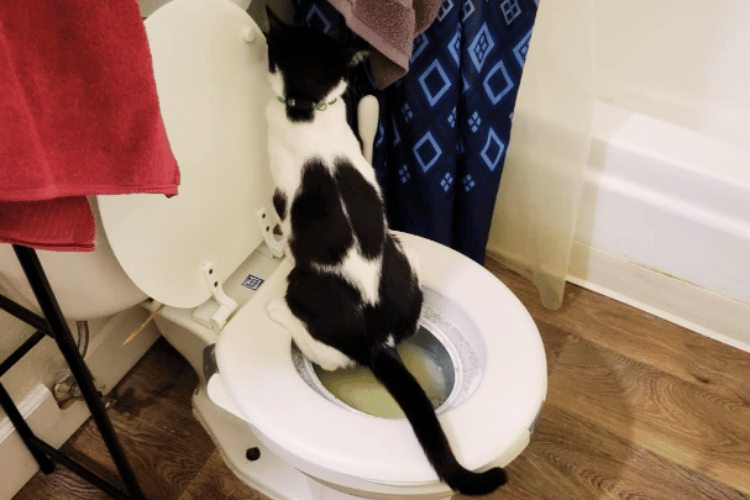
The Cat’s Natural Instincts and the Litter Box
Cats have a natural instinct to bury their waste. This behavior, which is both a tactic to avoid attracting predators and a way to keep their area clean, is deeply ingrained. Litter boxes cater to this instinct by providing a sandy environment where cats can dig and cover their waste. Transitioning to a toilet, which offers no such medium, might seem unnatural to most cats. This shift could potentially cause additional stress or confusion.
The Great Debate: Litter Box vs. Toilet
While the idea of not having to deal with kitty litter is appealing to many cat owners, one must consider if this aligns with the best interests of their feline friends. Litter boxes mimic a cat’s natural environment much better than a toilet bowl. Moreover, the act of balancing on a toilet seat might be physically challenging for kittens or older cats with mobility issues.
Health Implications for Cats and Humans
Toilet training a cat isn't just a quirky experiment; it has real health implications. For cats, the inability to bury their waste or the stress of balancing on a toilet can lead to anxiety, which may manifest in avoidance of the toilet and inappropriate elimination elsewhere. For humans, particularly pregnant women, handling cat feces improperly can pose risks such as toxoplasmosis. This disease is especially concerning as it can harm unborn children.
Environmental and Practical Concerns
From an environmental perspective, flushing cat waste isn't ideal. Unlike human waste, cat feces can contain Toxoplasma gondii, which can survive sewage treatment and potentially harm marine life. Biodegradable litter, on the other hand, offers a more eco-friendly option as it decomposes naturally without harming water-dwelling wildlife.
The Logistics of Toilet Training
Toilet training a cat requires patience and a consistent routine. The market offers various toilet training kits designed to gradually transition a cat from litter box to toilet. These kits typically involve a series of rings filled with litter that fit over the toilet seat, slowly reducing the amount of litter and acclimating the cat to the toilet’s surface. However, not all cats will adapt to this change, and the process can be lengthy and fraught with setbacks.
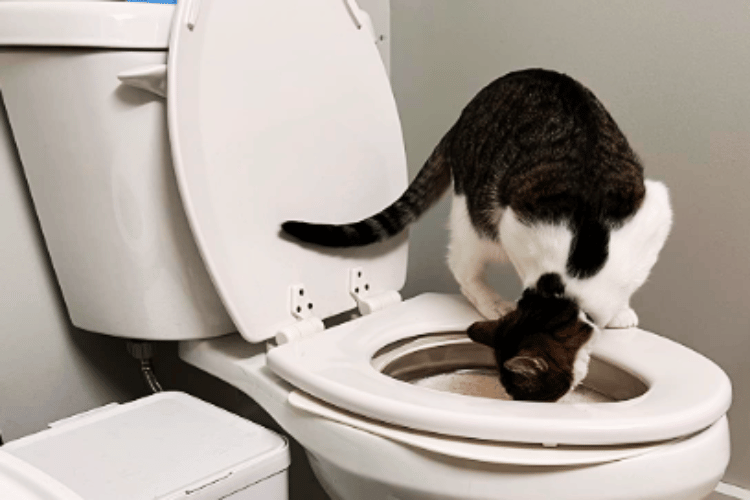
The Comedic Side of Cat Toilet Training
The Unexpected Perks of Teaching Fluffy to Flush
Who knew that teaching your cat to use the toilet could turn your bathroom into a feline comedy club? Picture this: your cat, perched precariously on the toilet lid, doing a delicate balancing act that rivals the best circus performers. It's not just about saving on litter or reducing environmental impact; it's about those priceless moments when you catch your cat staring intently at the swirling water, contemplating the mysteries of the flush. Plus, think of the party anecdotes! "Did I ever tell you about the time my cat accidentally flushed my phone?"
The Toilet Lid Tango
Imagine the scene: it's late at night, and you're half asleep, shuffling to the bathroom. As you fumble for the light switch, you hear a suspicious splash. Yes, toilet training cats can lead to some unexpected midnight encounters where you find your furry friend practicing their 'toilet lid tango.' While the goal is to make the cat's natural instincts adapt to human sanitary ware, sometimes it feels more like they're training you to expect the unexpected. And let's be honest, every time they successfully use the actual toilet without redecorating your bathroom floor, it feels like a small victory parade.
The Purr-suit of the Perfect Potty Place
When embarking on the journey to toilet train your cat, consider the cat's natural instincts and their deep-rooted habit of burying their waste. Cats are not just being tidy; they're wired to hide their scent from predators and other cats. This instinctual behavior can make the transition from cat's litter box to human toilet a bit like teaching dogs to use a litter box—possible, but against their nature. Imagine the scene: your feline, accustomed to scratching around in litter, now perched precariously on the porcelain throne, paws tentatively tapping the water. It's a YouTube moment waiting to happen, but is it what Fluffy really wants?
Toilet training forces a cat to abandon these ingrained habits, which can lead to stress or even behavioral issues. Cats are creatures of comfort, and the familiar feel of litter beneath their paws is more than just a toilet; it's a comfort zone. By removing the litter box, you might save space in your house and reduce the smell of cat's poop, but at what cost to your cat's mental well-being? Plus, there's always the risk of a misstep during the learning phase—imagine waking up to find someplace other than the toilet has become the new bathroom spot. It's not just about training; it's about understanding and adapting to your cat's needs and natural behaviors.
The Curious Case of the Cat Commode Chronicles
Have you ever wondered what goes through your cat's mind when you switch from a litter box to a fancy new toilet setup? Well, it's not just a simple hop and squat! Transitioning from the natural instincts of burying their waste in sand to balancing on a shiny porcelain rim can be quite the mental gymnastics for our feline friends. This shift might seem amusing to us, but for cats, it's a whole new world of potty protocols. They must suppress their instinct to dig and cover, which can be as perplexing to them as watching a dog trying to meow!
Moreover, the change in scenery from a litter box to a toilet can affect a cat's health in unexpected ways. While the idea of a toilet-trained cat might seem cleaner and more space-efficient, it's crucial to consider if our pursuit of convenience might lead to stress or confusion in our pets. Cats are creatures of habit, and significant changes in their routine, such as where and how they relieve themselves, can lead to anxiety or even urinary tract infections. It's a delicate balance between embracing innovation in pet care and respecting the natural behaviors and needs of our furry companions.
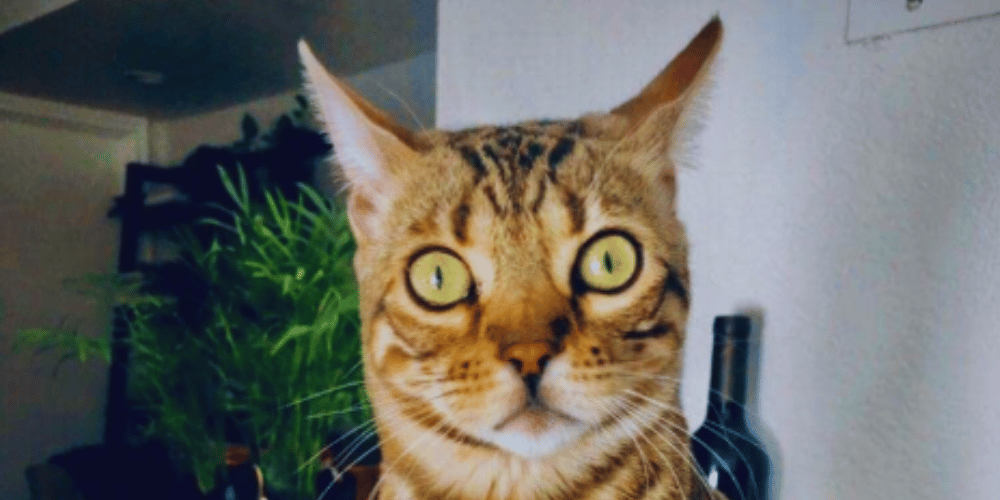
The Perils of Porcelain: Why Cats and Toilets Might Not Mix
When considering the leap from cat's litter box to toilet, one must ponder if it aligns with a cat's natural instincts. Cats have a primal urge to dig and cover their waste, a behavior that's crucial for their mental satisfaction and stress relief. Transitioning to a toilet can strip them of this natural routine, potentially leading to behavioral issues. Imagine a world where you're denied a simple daily habit—sounds frustrating, right? That's the kind of dilemma our feline friends might face in the sleek, water-filled arena of the modern toilet.
Moreover, the health implications for toilet trained cats are significant. The position a cat must maintain to balance on a toilet can be unnatural and stressful to their body, especially as the cat ages. This could lead to musculoskeletal problems or exacerbate a pre-existing condition like arthritis. Additionally, the inability to monitor a cat's poop directly can make it challenging to catch early signs of health issues such as a urinary tract infection. It's like trying to solve a mystery without all the clues—nobody wants to play detective with their pet's health at stake!
The Litter-ary Genius: Cats and Their Innate Bathroom Habits
Cats, known for their meticulous nature and a strong inclination towards cleanliness, seem to have a litter-ary degree when it comes to managing their bathroom habits. Their natural instincts drive them to cover their waste, a behavior deeply embedded in their DNA to avoid attracting predators. This instinctual practice makes the idea of using a cat's litter box not just a convenience but a profound testament to their wild ancestry. Transitioning from litter box to toilet might seem like a small step for a human but is a giant leap for feline-kind.
However, when we talk about potty training our whiskered friends, we're essentially asking them to go against their natural grain. While the cat's litter box offers them a familiar and instinctual environment for waste disposal, shifting to a human toilet can be disorienting. This change not only challenges their natural behaviors but might also affect the cat's health adversely if not done with careful consideration to their age, body, and adaptability. It's a quirky, yet complex, transformation from sand to porcelain that might just require more than a simple flush.
The Loo Chronicles: A Tail of Two Kitties
Have you ever wondered what goes through a cat's mind when it first encounters the porcelain throne? Picture this: your feline, accustomed to the soft, sandy texture of a litter box, suddenly faces the sleek, water-filled bowl. The initial suspicion isn't just comical; it's a full-blown investigation. Cats, driven by their natural instincts, might circle the toilet, paw at the water, or even attempt a cautious sniff. This detective work isn't just about curiosity; it's about assessing a completely alien bathroom habitat!
Now, imagine the first time your cat actually tries to use the toilet. There's a good chance it involves more acrobatics than an Olympic gymnastics event. Cats are agile, but balancing on the rim while managing their business? That's a skill that doesn't come naturally. The scene often includes several false starts, a couple of slips, and maybe even an accidental dip. While it's a learning curve for them, for us, it's a series of heart-stopping yet hilarious moments that beg to be shared on social media. Just think of the likes!
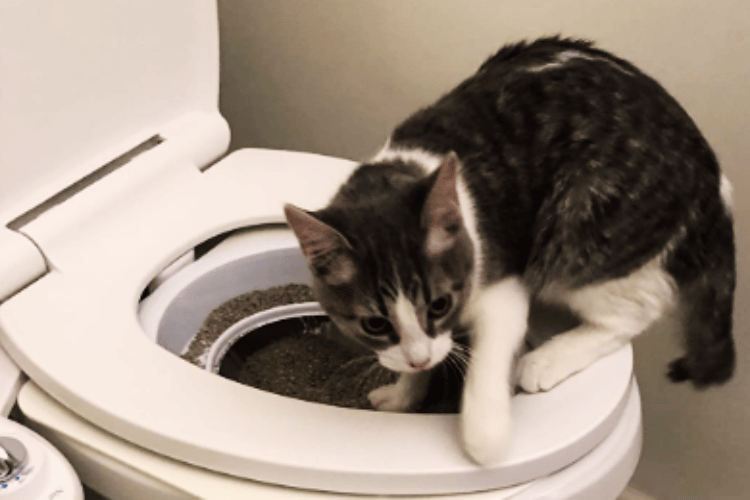
Feline Flush Fiesta: When Cats Conquer the Commode
Once the initial hurdles are overcome, some cats turn toilet use into a cause for celebration. Imagine your cat, having successfully navigated the complexities of the toilet, now viewing each visit as a triumph. There's a proud strut as they approach, a careful but confident leap onto the seat, and perhaps a satisfied meow after completing their task. This isn't just a win for your cat's adaptability; it's a hilarious spectacle that underscores the quirky intelligence of our feline friends.
But let's not forget the aftermath. Every party leaves a bit of a mess, and the feline flush fiesta is no exception. From the occasional splash outside the bowl to the mysterious disappearance of toilet paper rolls, these victorious moments come with their own set of comedic challenges. As cat owners, we quickly learn to keep a mop handy and to hide the spare rolls. After all, what's a little cleanup compared to the environmental benefits of reducing cat's waste with a more sustainable solution? Plus, the laughs are worth it!
The Eco-Paw Print: Environmental Impacts of Cat Waste
When considering the environmental impact of cat's poop, the traditional litter box might seem less appealing due to the non-biodegradable waste it generates. However, before you jump on the toilet training bandwagon, consider the broader ecological implications. Flushing cat waste can introduce harmful pathogens into water systems, potentially affecting water-dwelling wildlife. It's a classic case of a good intention with unintended consequences, where the attempt to reduce landfill waste could harm aquatic ecosystems.
On the flip side, eco-conscious cat owners might explore biodegradable litters or even systems that separate cat's waste in such a way that it can be composted, thus turning a problem into a green solution. While toilet training a cat might seem like a neat solution to avoid dealing with litter, it's essential to weigh the environmental pros and cons. After all, our feline friends are notorious for their love of nature—albeit observed from a comfortably perched windowsill—and we owe it to them to consider the full scope of our environmental paw-print.
Feline Privacy: Do Cats Crave Their Own Bathroom Space?
Cats, much like their human counterparts, appreciate a bit of privacy when it comes to their bathroom habits. The cat's litter box offers a secluded spot where they can feel safe and undisturbed. Transitioning to an open toilet, often located in a space shared with humans, can make a cat feel vulnerable and stressed. Imagine having to share a single bathroom at a crowded party—now, that's an awkward situation for anyone, let alone a privacy-loving cat!
Furthermore, the social dynamics of a household can change when a cat is toilet trained. In multi-cat households, the litter box serves as a significant part of how cats communicate with one another through scent. Removing this mode of communication by switching to a toilet can disrupt the social hierarchy, leading to increased stress and potential conflicts among cats. It's like removing the water cooler from an office; suddenly, everyone's a bit more on edge about where to dish the latest gossip!
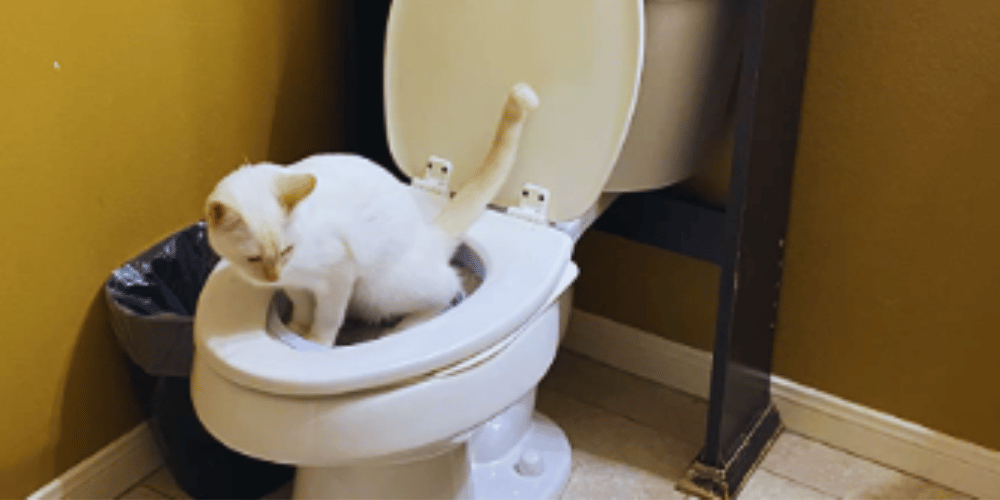
Feline Follies: The Unexpected Side Effects of Toilet Training
Imagine the scene: your cat has finally mastered the art of using the human toilet, a feat worthy of a circus act! But just when you think you've eliminated the need for a litter box, you discover the new amusing quirks of toilet-trained cats. From the fascination with the flushing mechanism—leading to repeated flushes just for the fun of it—to the occasional mishap of falling in, it's a comedic spectacle that might just make you question your decision.
And let's not forget about the surrounding area of your once-pristine bathroom. Cats are known for their cleanliness, but transitioning from litter to toilet doesn't always mean less mess. Those little paws can still track water and, occasionally, cat's poop outside the intended area, especially if your cat decides the toilet seat is more of a playground than a bathroom. Plus, if you have other animals, like a curious dog, the dynamics can get even more hilariously complicated. The bathroom might just turn into the new hotspot for all your pets, leading to a flurry of furry bathroom battles that are both endearing and exasperating.
The Splash Zone: Navigating Water Risks with Toilet-Trained Cats
Toilet training your cat might seem like a neat solution to avoiding the daily scoop, but have you considered the water risks? For starters, balancing on a slippery seat could lead to more than just an undignified dunk; it could pose real risks to your cat's health. A slip could result in injuries, or worse, a water-phobic cat could develop a fear of the bathroom altogether, leading to avoidance behaviors and potential urinary tract infections from holding in their waste.
Moreover, the toilet water itself can be a concern. While most pet owners keep their toilets clean, the residual chemicals from cleaning agents can harm a cat's sensitive paws and body. There's also the environmental angle to consider—medications and other chemicals excreted by humans can end up in the water, potentially affecting water-dwelling wildlife. Veterinary medicine often advocates for practices that keep both pets and the environment safe. So, while it might be amusing to brag about your toilet-trained cat, it's essential to weigh these risks against the novelty of having a cat that uses the human loo.
The Quirky Challenges of Potty Training Puss
The Great Toilet Paper Caper
Let's face it, cats are curious creatures, and introducing them to new concepts like toilet training can lead to some hilarious mishaps. One of the funniest? The Great Toilet Paper Caper. As you encourage your cat to use the toilet, don't be surprised if they become fascinated with the toilet paper roll. Picture your cat spinning that roll like a DJ at a club, with streams of toilet paper decorating your bathroom like it's New Year's Eve. It's not just about teaching them where to pee; it's about securing your toilet paper supply from these furry little vandals!
The Battle of the Bathroom
Toilet training your cat isn't just a step towards modern pet care; it's an outright adventure sport. Imagine trying to explain to your guests why there's a litter pan next to the actual toilet, or why your cat insists on following them into the bathroom to demonstrate their new skills. And if you have more than one cat, the bathroom could become the new 'hot spot' for territory disputes. "Excuse me, I was here first!" becomes a common meow in your household. It's not just about saving space or reducing the environmental impact—it's about turning your bathroom into the heart of cat drama and diplomacy!
Age and Adaptability
The age of your cat can significantly influence the success of toilet training. Kittens, being naturally more adaptable, might take to the changes with more enthusiasm than older cats set in their ways. However, the training should be approached with caution to ensure it doesn't interfere with the critical early development of a kitten's elimination habits.
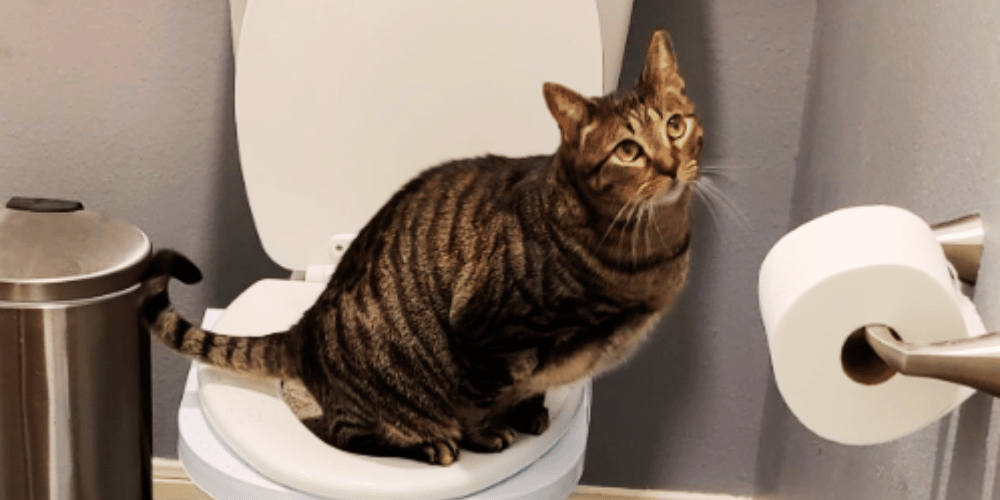
Space and Accessibility
In homes where bathroom access is limited, having a cat that requires use of the toilet can lead to logistical challenges. Imagine the morning rush with every family member, including the cat, needing to use the same space. Additionally, if the bathroom door is accidentally left closed, it could lead to accidents or the cat finding alternative places to relieve itself.
The Social Aspect of Litter Boxes
Cats often use their litter box as a means of communicating their health status. Regular cleaning of the litter box can help cat owners monitor their pet’s health, spotting signs of potential issues like urinary tract infections or changes in waste. Toilet training removes this possibility, potentially delaying the detection of health problems.
Behavioral Considerations
Toilet training might alter a cat's behavior. The stress of adapting to such a significant change can lead to behavioral issues or even a regression in other trained behaviors. It's essential to monitor a cat's overall demeanor and readiness continuously during toilet training.
The Final Verdict
While the prospect of a litter-free home is tempting, it's crucial to weigh the benefits against the potential drawbacks for both the cat and the household. Toilet training a cat is not merely a novelty but a significant lifestyle adjustment that might not be suitable for every cat or cat owner.
Summary
Toilet training a cat can be a humorous notion and a seemingly clean solution to the messy problem of kitty litter. However, it's essential to consider the cat's natural behaviors, health implications, and the practicality of such a training regimen. While some cats might adapt well, others could experience stress or health issues. Ultimately, the decision should prioritize the well-being and natural instincts of the feline friend.
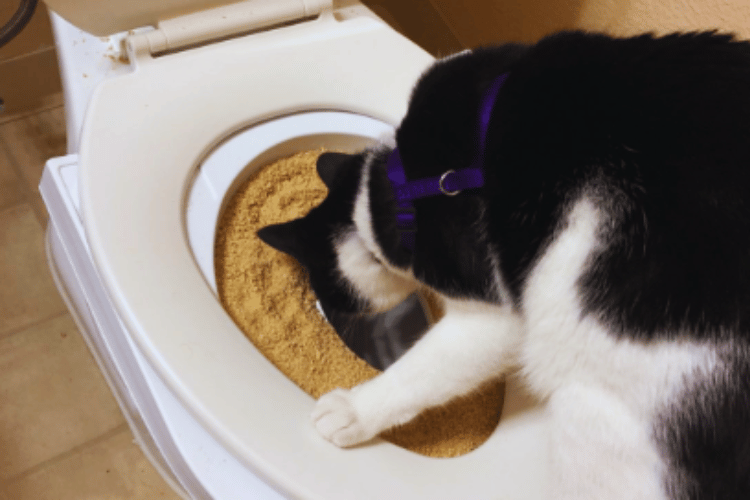
FAQ
Q: Can all cats be toilet trained? A: Not all cats are suitable candidates for toilet training. Factors such as age, temperament, and physical ability play significant roles in determining whether a cat can successfully be toilet trained.
Q: Is toilet training safe for my cat’s health? A: There are potential health risks involved, including stress and the risk of developing urinary tract infections due to holding in urine. It's crucial to consult with a veterinarian before embarking on toilet training.
Q: How long does it take to toilet train a cat? A: The duration varies depending on the cat's adaptability and the training method. It typically requires several months of consistent effort and patience from the cat owner.
Thank you for visiting LegitLists we hope this helps you make a legitimate choice!






